USSR 1950 – Compact – 35 mm – Common.
Leicas are exclusive devices that forged the very concept of the modern camera through quality and innovation.
For years a large part of the industry tried to produce alternatives (or imitations) with equivalent features at a much more accessible price point. Imitations range from cameras “inspired by Leica” such as the various Japanese creations of the 50s to “Leica clones” such as the mass produced Russian Fed or Zorki that were almost identical to the original. Most copycats are made out of the most iconic models such as the Leica II or III.
Since owning a Leica (and especially a rare or singular one) has been a life goal for generations of photographers and collectors, it comes at no surprise that another (underground) industry was built on turning the abundant and cheap lookalikes into hordes of counterfeit collectibles.
By re-engraving the top of a Zorki one can quickly obtain a convincing Leica II that will easily make the day of a not-so-expert collector on a flea market. Crates of such fake Leicas were shipped to Europe and United States from Russia during the 50s and 60s.
Where it becomes more interesting is when you bump into Leica engraved cameras that are in no relation with anything Leica actually produced. Golden brass cameras with snakeskin or simple plastic covering, rare military editions with random and misspelled German engravings, ultra rare “luxus” editions surprisingly appearing from nowhere, all available by the dozen out of suitcases freshly landed from Moscow and ready to be sold to gullible westerns searching for the deal of their life. The is literally no limit to the creativity in that domain.
When unpacking my father’s collection, I found a box with a dozen of such improbable Leicas. For a second I thought I was rich… For a second only.
Even if they are just copies, they carry a piece of history with them, so I wanted to add them in the 99 cameras, even if just as a bonus.
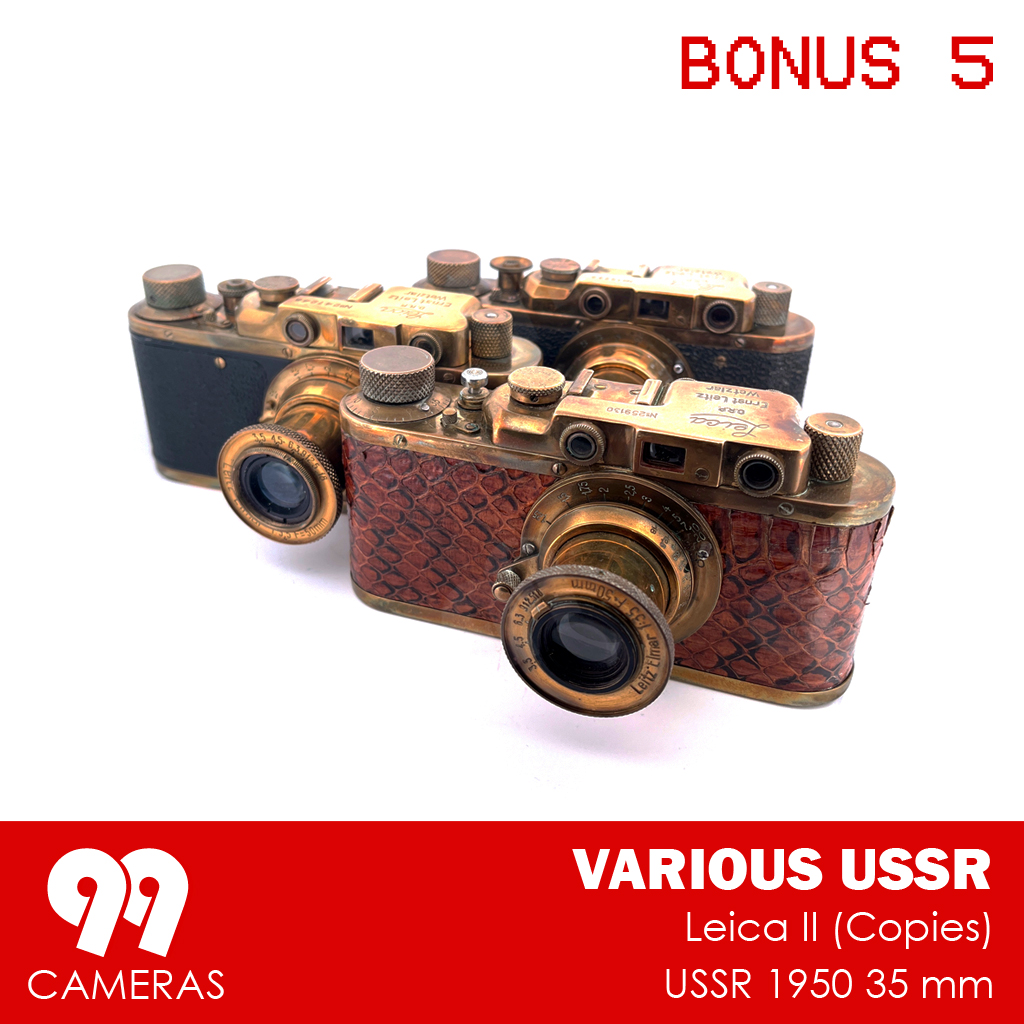
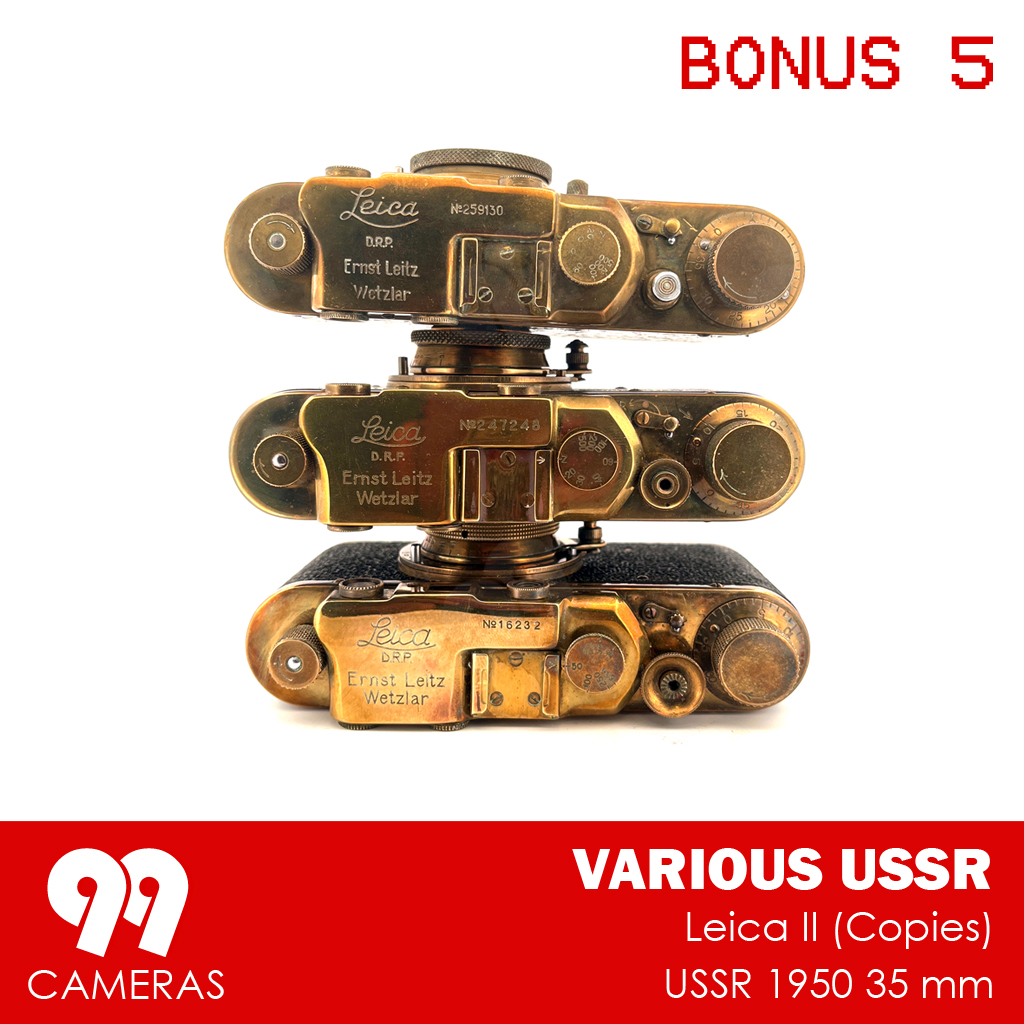
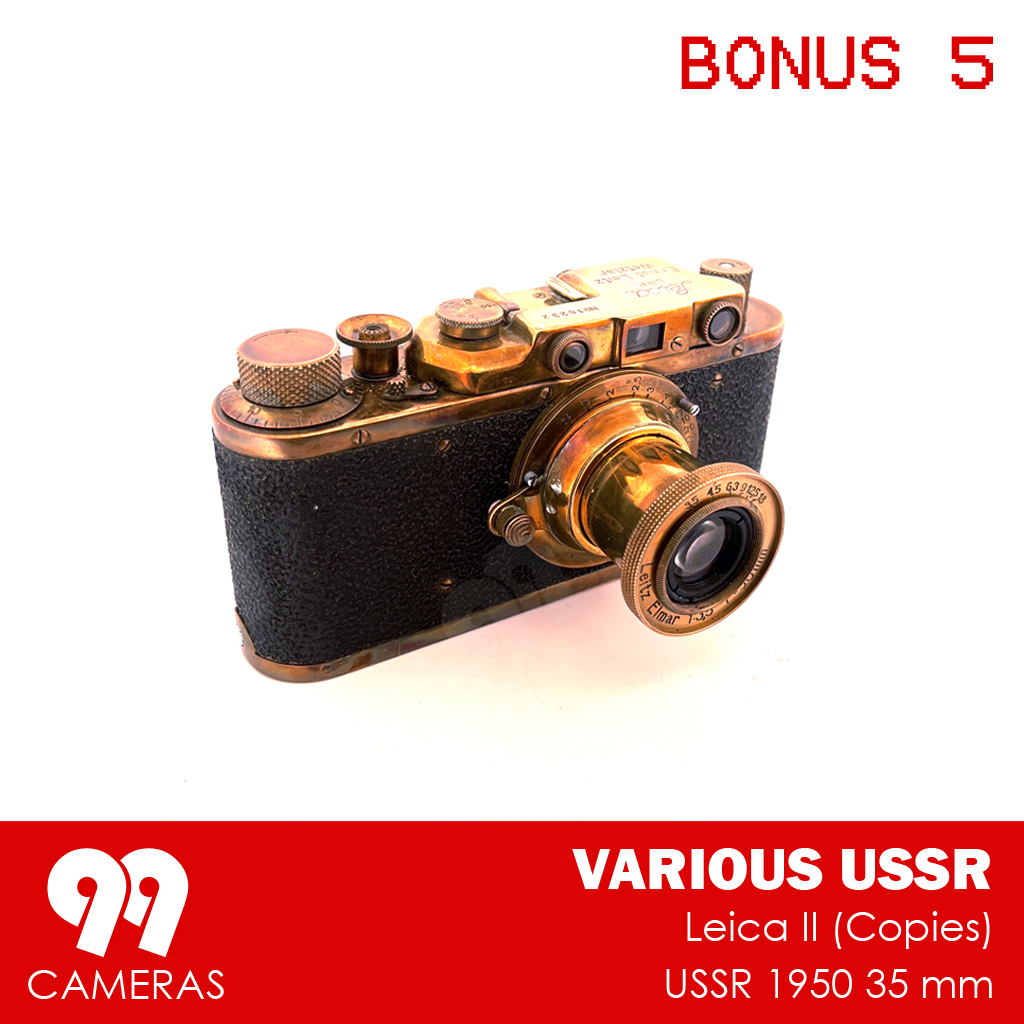
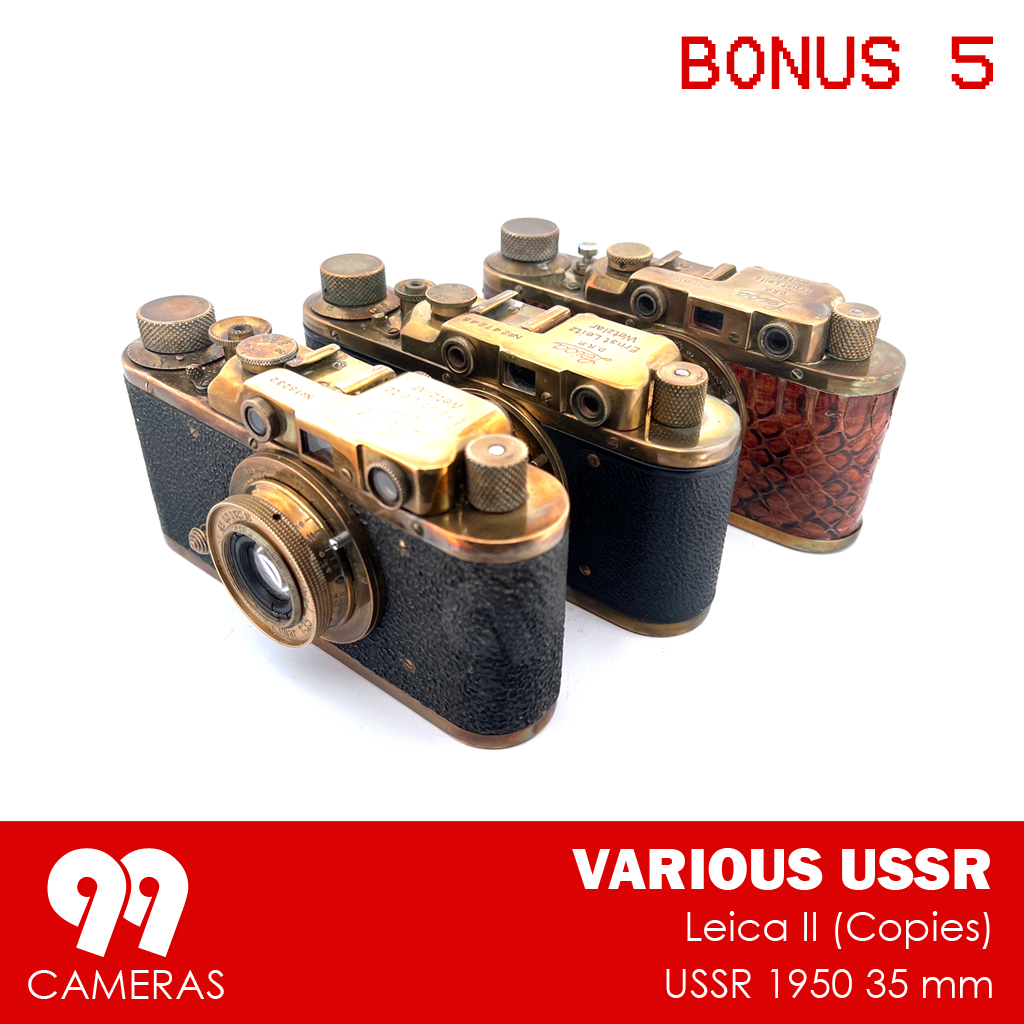
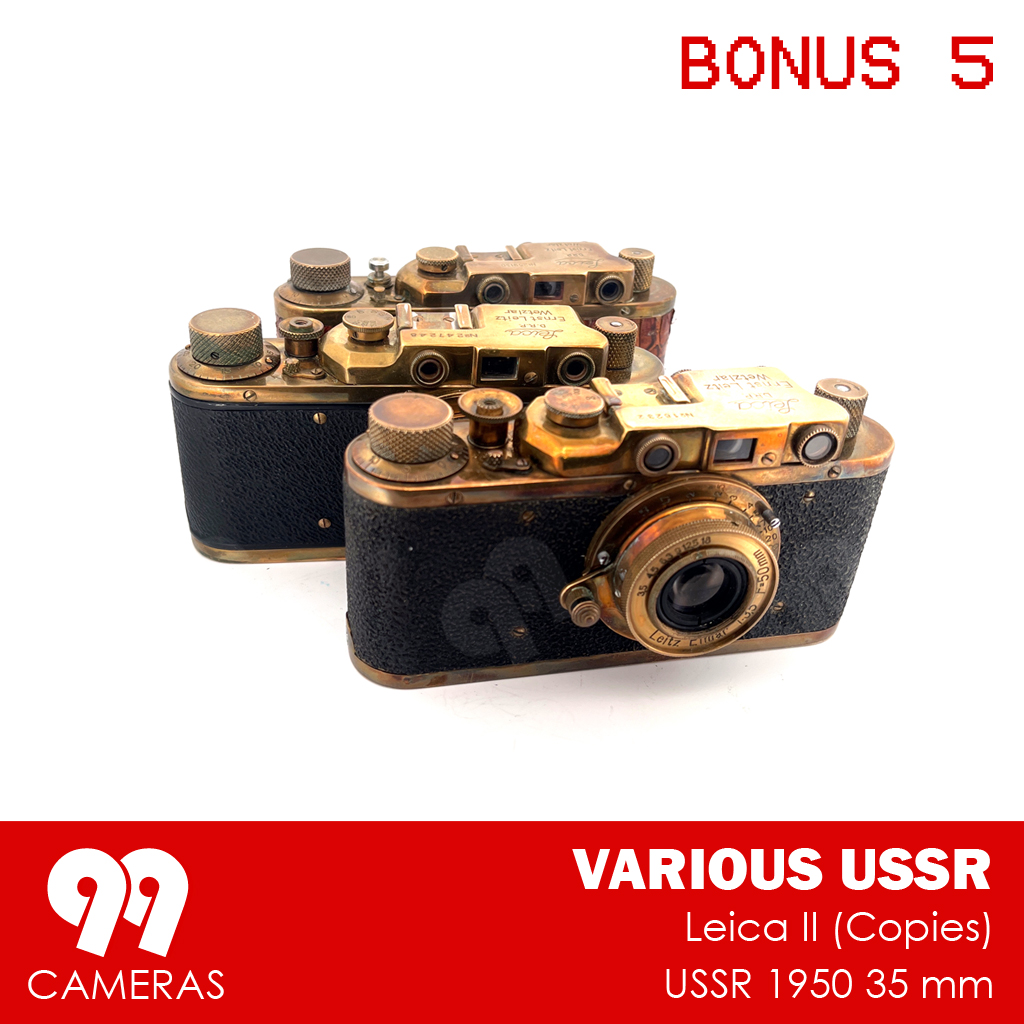
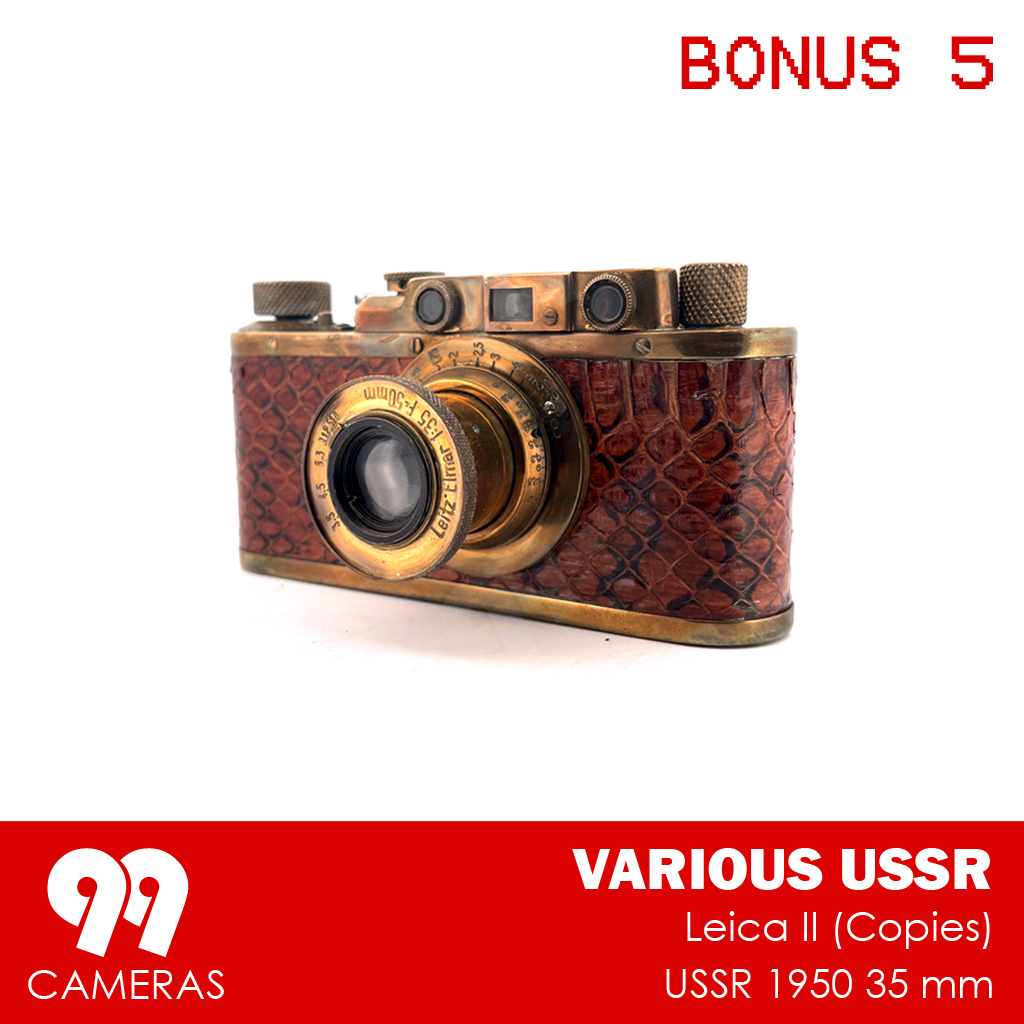
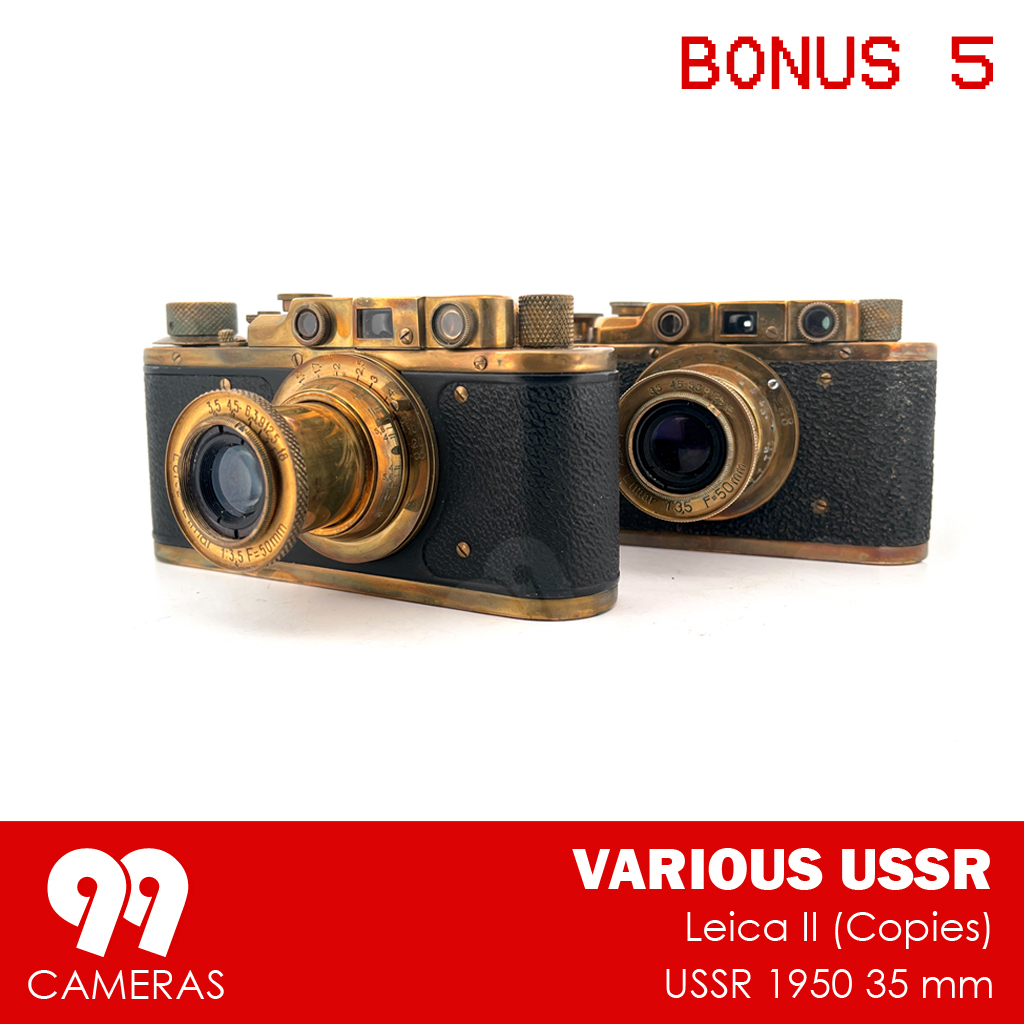
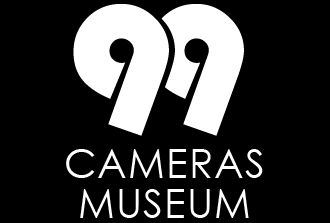


You must be logged in to post a comment.